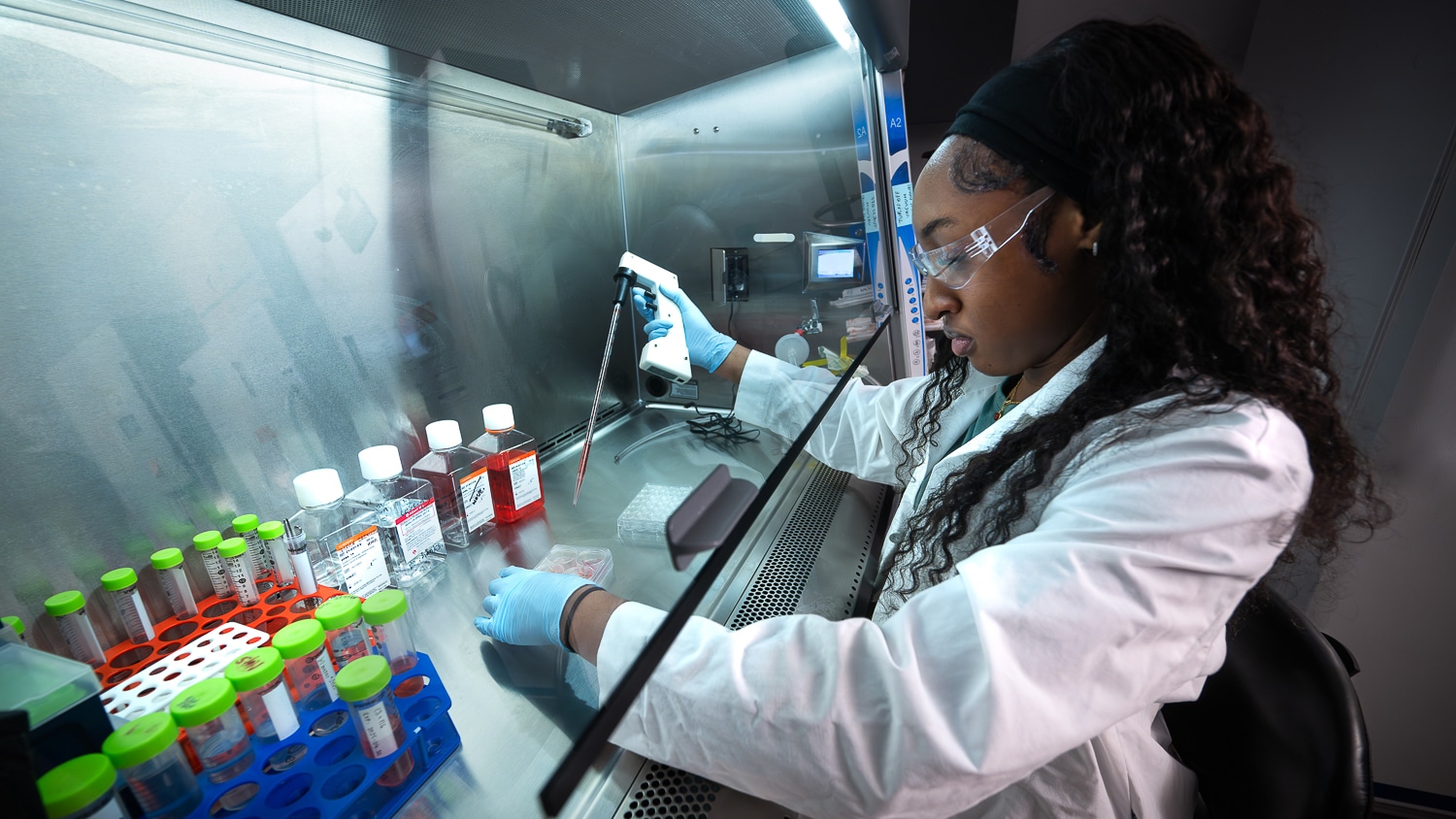Textiles Researchers Develop a Fitting Solution to Determine Accurate Size

By Susan Fandel
In 2017, an estimated 1.66 billion people worldwide purchased goods online. During the same year, 20 to 50 percent of online clothing sales were returned — a majority due to poor fit. Researchers at the Wilson College of Textiles at NC State University have developed a solution to the waste and cost of these returns: Prime Fit, a proprietary mobile app and garment system that would offer an inexpensive way for consumers to obtain accurate body measurements in the privacy of their own home (patent number US2018/046248).
“This system could be revolutionary for online shoppers, e-commerce clothing companies and even fitness and wellness applications,” said Andre West, assistant professor in the college’s department of Textile and Apparel, Technology and Management.
The app, in development, obtains measurements from 2D images that have been taken with a cell phone or digital camera while the user wears a special Prime Fit measuring garment. The software uses height, weight, age, gender, ethnicity and the 2D measurements to provide an output of accurate dimensions to help consumers identify their “size” for clothing purchase.
“We wanted to find a way of making it easy and fun for people to track their size through weight loss or gain with very accurate results.”
Common methods of determining the right size clothing include trying on dozens of garments until the right size is found, taking manual measurements or being body scanned by professionals. Most consumers do not know their body measurements when shopping online and have significant difficulty taking their own measurements. Body scanning, while accurate and fast, requires expensive equipment and training for operation. The constant presence of cell phones in our daily lives would make the Prime Fit method convenient and easily accessible for consumers.

However, since the camera on a cell phone is no better at “seeing” through clothing than any other device in the marketplace, the reliability of the result relies heavily on the garment worn by the user. The development of the Prime Fit garment, which can be easily photographed using a cell phone or other device, aids in the extraction of measurements and allows consumers to use the technology without privacy concerns. All bodies change over time, which consumers may or may not be aware of — this can have a significant impact on the size of clothing needed.
Initial evaluation tests demonstrated the following advantages: achieving accurate measurement results, obtaining better garment sizing predictions and gaining instant sales opportunities, as well as integrating with other applications related to the evaluation of weight loss results, muscle gain, health monitoring, physical fitness and 3D computer-aided design. Test results showed the system’s accuracy at this time is within half an inch of true body measurement. The accuracy of the app will increase using machine learning. As each garment is worn, data will be added to a database.
“We wanted to find a way of making it easy and fun for people to track their size through weight loss or gain with very accurate results. The garment is the first of its kind that not only can track your measurements but is also fashionable to wear to the gym or doing many forms of exercise,” said West. “The garment can be shared with friends and family members. Hopefully, over time, major brands will be able to utilize this garment and app to drastically reduce returns by allowing the customer to purchase the correct size.”
The Prime Fit app and garment system will be presented at the IFAI Expo in Dallas, Texas Oct. 16-18; at the 9th International Conference and Exhibition of 3D Body Scanning and Processing Technologies in Lugano, Switzerland October 16-17; and at the ITAA Conference in Cleveland, Ohio on November 6. Online shoppers will see the release of the app soon.
The Prime Fit Team is comprised of West; Dr. Cynthia Istook, Cornelson Family Distinguished Professor of Textile and Apparel Design; and students Hawes Collier, Electrical and Computer Engineering; Jiayin Li, Textile Technology Management; and Sibei Xia, Textile Technology Management.
- Categories:


